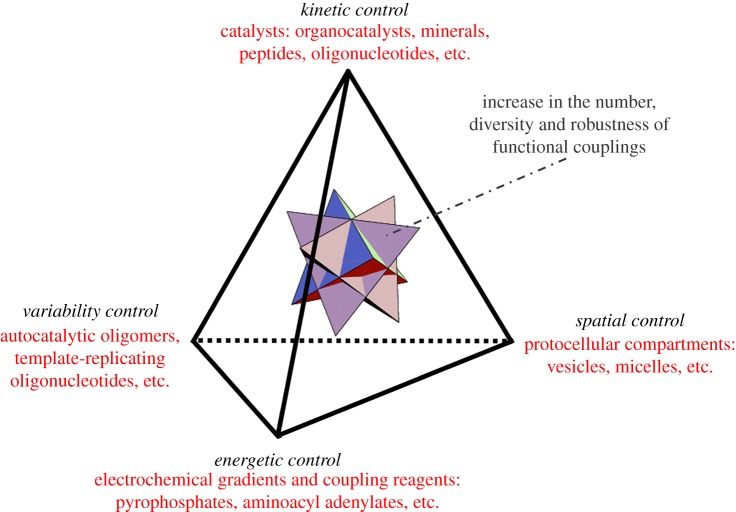Figure 2.
Schematic of the minimal set of control mechanisms that should operate, in a highly interdependent manner, to support the development of the first autonomous functional systems in the context of heterogeneous prebiotic chemistries. These mechanisms involve: (i) kinetic control, to coordinate the different reaction processes in time and enable transformations that reinforce the incipient chemistry but would otherwise be kinetically hindered; (ii) spatial control, to establish a clear inside/outside distinction and preserve minimal concentration thresholds of the relevant chemical species; (iii) energetic control, to facilitate the thermodynamically uphill but necessary reactions; and (iv) variability control, for these systems to have a minimal chance to evolve, through NS, into more complex forms. These four types of control mechanisms are represented as the vertices of a tetrahedron (with candidate molecular and supramolecular components suggested in red) and connected to each other by integrative and cooperative chemical couplings (black edges). Individuals with such an irreducible heterogeneity in their composition (and complexity in their dynamic behaviour) would constitute proper candidates as units of selection in this extended framework to conceive prebiotic chemical evolution. As a result of that evolutionary process, one could envision further functional diversification and more efficient integration (through new coupling processes), which would confer higher dynamic robustness to increasingly complex individuals in the population (a stage that is schematically illustrated by the multiple tetrahedron within the initial, elementary one).

